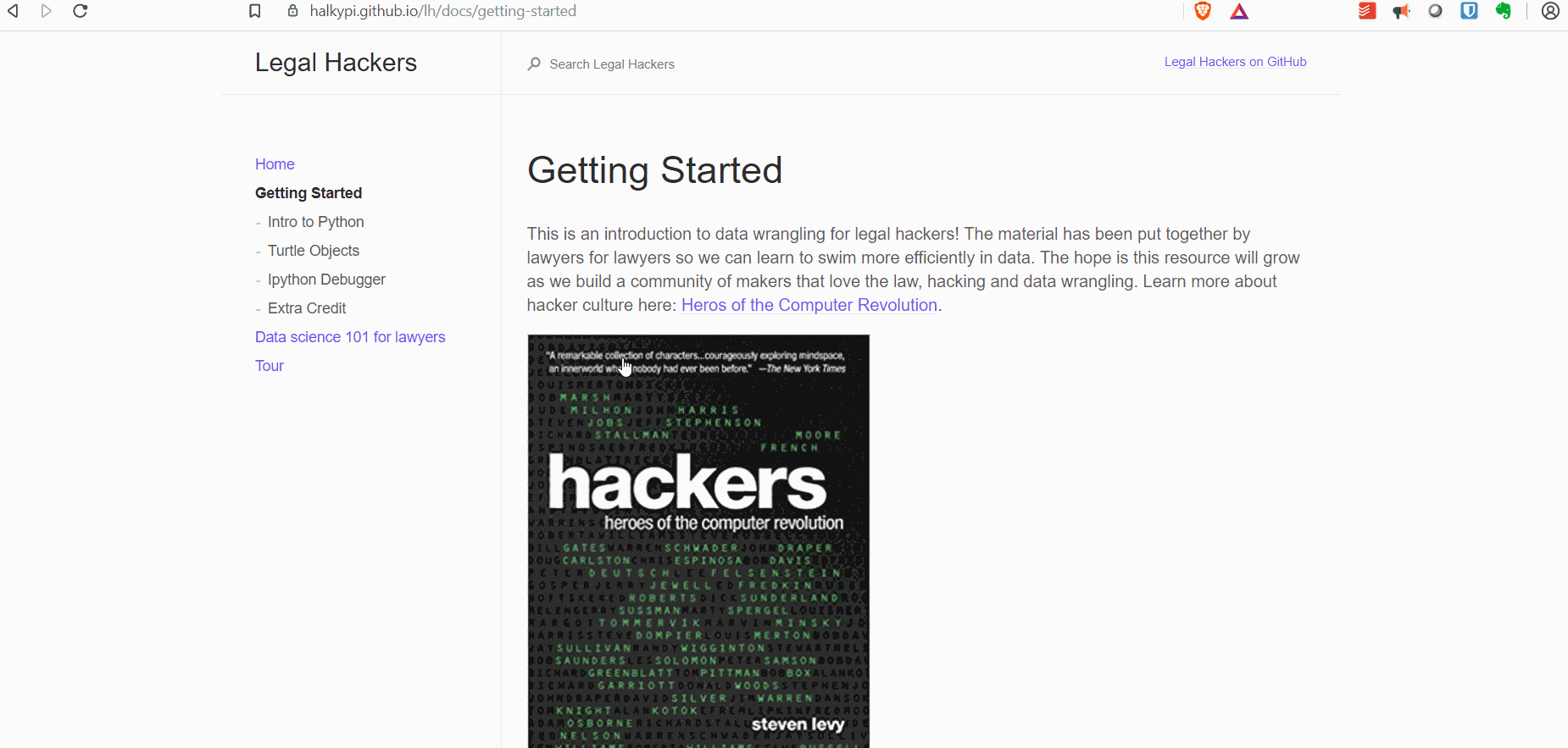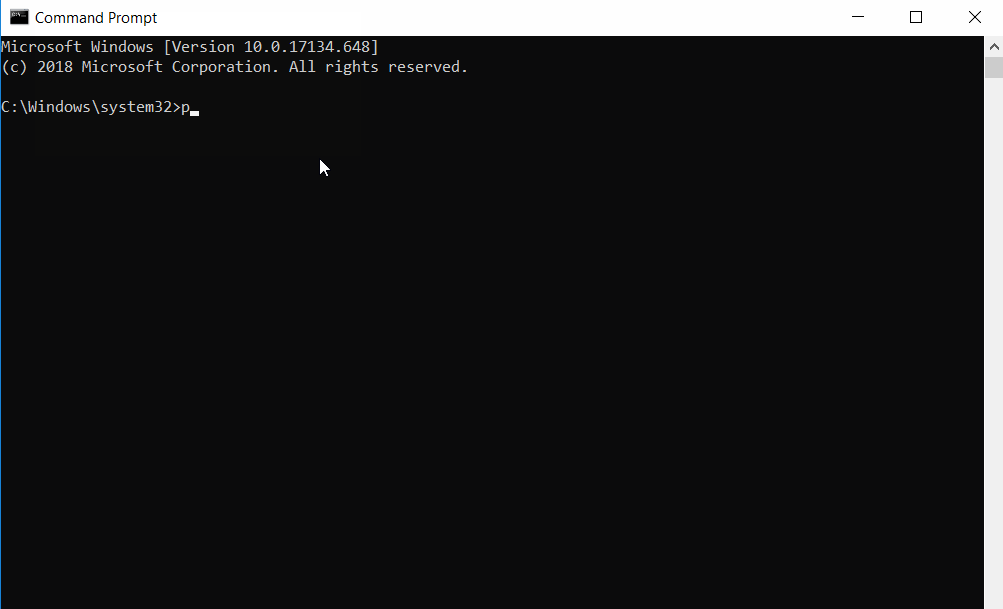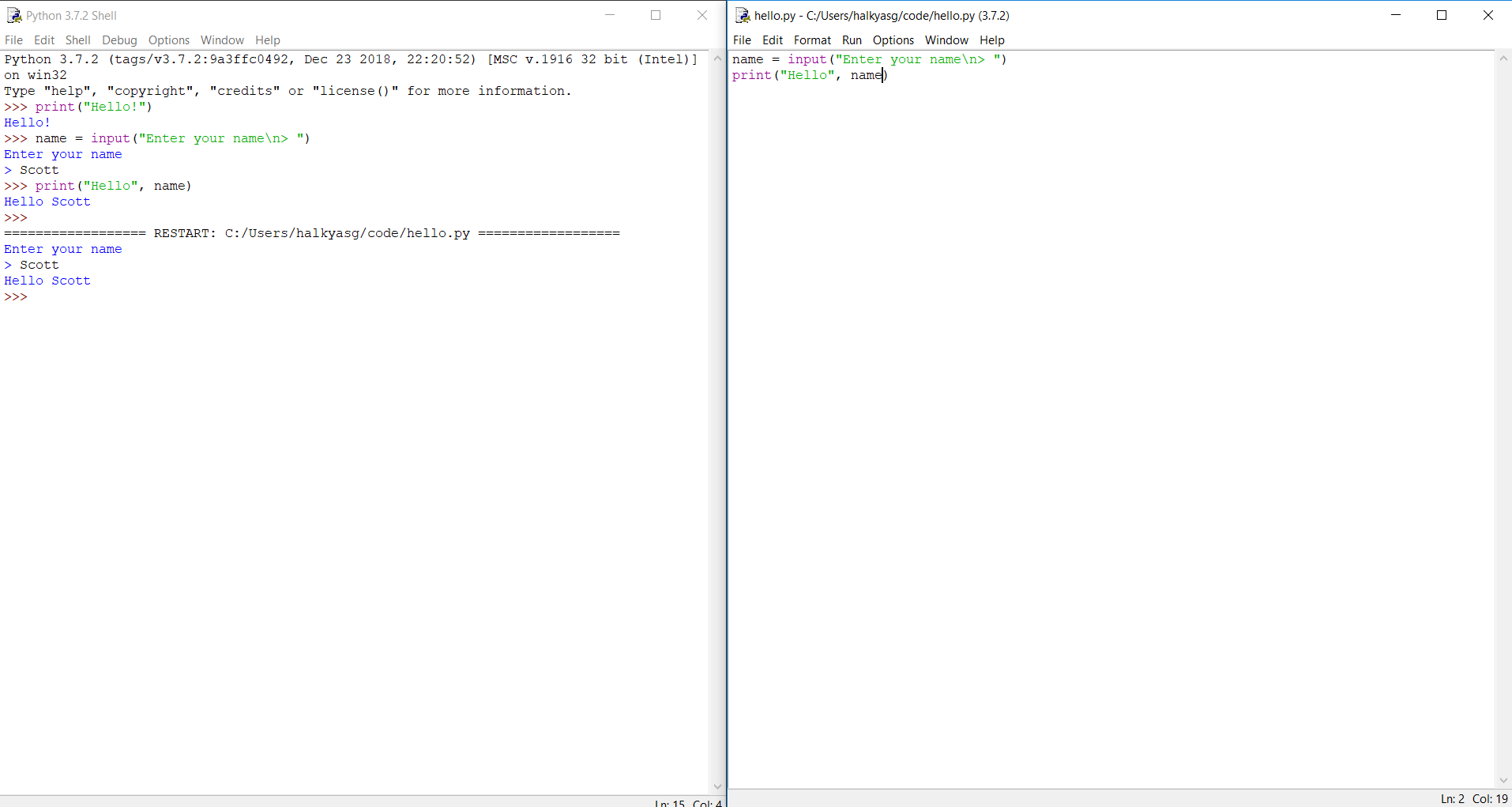Intro to Python
We’ll be using Python 3 because it’s free, powerful, full stack (Python is the second-best language for everything) and the lingua franca of data science. There may also be a little SQL.
Installation
Download
There are different installations out there, Anaconda is awesome but a bit bloated for what we need to get started. So let’s install standard Python 3 (Python 2 is being deprecated in 2020) and then use python to install the packages we need as we go (some miniconda stuff). Navigate to https://www.python.org/downloads/ and download the latest version for your operating system. Launch the executable, check the Add Python to Path box and accept the default settings.

Test installation
Open a terminal, type in python and press enter. You should see three chevrons >>>, see below. If this doesn’t work you probably missed the Add Python to Path box, just reinstall.
First program
Type print("Hello!") at the interactive prompt. You could also do some basic maths and then exit() when you’re ready to move on.
$ python
>>> print("Hello!")
Hello!
>>> (3 + 2) * 3
15
- Why doesn’t it print 9?
- What would the output from these be?
>>> 2 + 3 * 3
>>> 3 + 2 * 3
>>> exit()
exit

Some good ‘getting started’ guides
- https://automatetheboringstuff.com/ This is arguably the best resource out there for getting started. It’s free to read online and there are some youtube videos. Al is also a good egg.
- https://docs.python.org/3/ The docs! Have a browse, the great thing about python is that everything is in python, the website, even the documentation is maintained with python - see sphinx.
- https://docs.python.org/3.3/library/turtle.html?highlight=turtle Everything in python is an object, moving a turtle around makes it much easier to grasp the concept of object oriented programming. The turtle tutorial has also stood the test of time and is a quick way to learn the data types and the standard library. Turtle graphics may have its roots in Logo but it is not just for children!

IDLE - Integrated Development and Learning Environment
Python is named after the 70’s comedy show Monty Python so there are many references to famous sketches in ‘the docs’ and code. For example, the package manager or pip, is commonly referred to as the ‘cheese shop’. Most languages have an integrated development environment, or IDE, which programmers use to write and maintain their code. Idle or the Integrated Development and Learning Environment (after Eric Idle) is the python one that ships with the standard installation. Some people prefer PyCharm but a text editor (like notepad++, sublime or vim) and the terminal also work well. Jupyter notebooks are extremely popular with the data science community. Amazon SageMaker comes with Notebooks, machine learning libraries and everything a developer would need to train, build and deploy a solution.
We’ll stick with IDLE for now as it is cross platform and designed for learning. It has a decent debugger which means we can step through code, even IDLE’s, which is part of the TKinter module. Reading or stepping through well written code is one of the quickest ways to gain fluency.
As we look at these different tools it will soon become apparent that there is a python module for just about everything. So if you are curious about a technology, say web development, try learning flask.
Open IDLE
Earlier we ran a program through the python intepreter using the terminal. Let’s do the same with IDLE. The main appeal of python is this interactive, experimental approach. It is possible to run complicated programs, load various data structures and then enter interactive mode and explore from there. Try this out:
name = input("Enter your name\n> ")
print("Hello", name)
First script
Click File > New File. You should now have the interpreter (or shell) next to an untitled text file. Put them side by side and rename the File > Save As hello in a new directory named code in your home directory. You’ll notice IDLE automatically adds the .py extension. Save the file and Run > Run Module or F5 to execute. You should see:
Algorithms, Binary Search the Number Game
An algorithm is a set of steps or as Cathy O’Neil outlines in her book Weapons of Math Destruction, “an opinion embedded in code”.
- https://en.wikipedia.org/wiki/Algorithm
- Weapons of Math Destruction: How Big Data Increases Inequality and Threatens Democracy
- Guess the number game
# Guess the number game adapted from:
# https://inventwithpython.com/chapter4.html
import random # import module, try: import this
print("Hello!")
name = input("What is your name?\n> ")
number = random.randint(1,100) # https://docs.python.org/3.7/library/random
print(f"Well, {name} I am thinking of a number between 1 and 100.")
# print(number) # debug statement
guess_cnt = 0 # initialize guess count
# Comparison operators, WHILE true and IF true
while guess_cnt < 7: # true and false, binary and comparison operator
# Get guess from user and cast to an int
guess = int(input(f"Take a guess (total: {guess_cnt})\n> "))
guess_cnt += 1 # increment the count
# IF true, check the user's guess
if guess < number:
print("Your guess is too low.")
if guess > number:
print("Your guess is too high.")
if guess == number:
break
if guess == number:
print("Nice! You guessed it.")
else:
print(f"The number I was thinking of was {number}.")
# How might we:
# - use binary search?
# - check the user's input?
# - ask the user if they want to play again?
- Harvard’s CS50 introduction to binary search 19:58 - 28:20
Next Steps
- Read and complete the exercises in chapters 1 through 6 of Automate the Boring Stuff with Python
- Review the accompanying playlist
- Move on to Turtle - an intro to python objects

